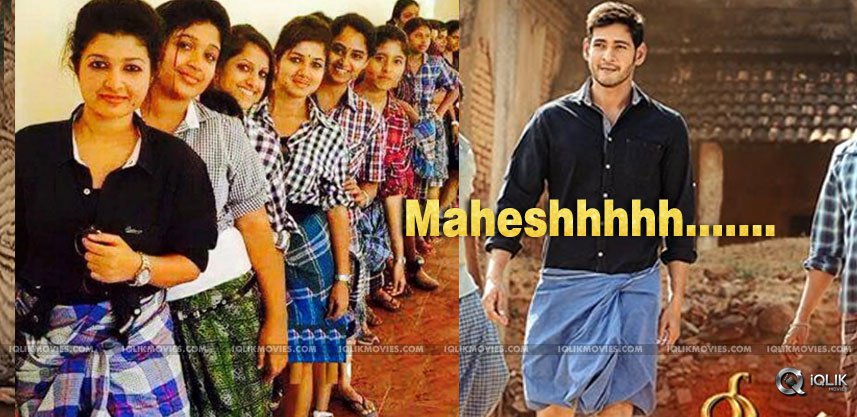Ever wonder what gives rise to online hoaxes, where unverified stories and often complete fiction are disseminated as ‘news’ or ‘fact’ or as ‘important information’? Is it our own gullibility that makes us believe things that we want to believe? And how do these hoaxes originate? It is well meaning but misinformed individuals or people with malicious motives? Have you heard about the latest social network story from Kerala… the one that speaks of an innovative stand against the moral police but which is alas quite false?
The Kerala-girls-wore-lungis-to-college story

Image source
It is quite likely that this above image turned up on your Facebook timeline or was forwarded to you on WhatsApp. The story accompanying the photo goes like this: this girls’ college banned jeans as being inappropriate for girls to wear to college and so these girls came up with an innovative way to protect against the diktat. They turned up in lungis; ‘traditional wear’ that college authorities would presumably find difficult to object to.
People loved this ‘kickass act’ and forwarded the picture in large numbers. Many people really liked the idea and the way that it constituted a unique form of civil disobedience to make a point against moral policing. Women, tired of constantly being told what to wear, where and how, loved the idea of these girls making a humorous but essentially feminist stand and happily forwarded the photo.
It’s a hoax, people

Image source
Turns out, these aren’t college girls making a point against over-vigilant college authorities curbing their freedoms. These women are fans of superstar Mahesh Babu and in particular of his ‘lungi-look’. Apparently his movie Srimanthudu is a huge hit in the US and his lady fans there posed for this ‘Mass-in-Class’ picture. This phenomenon dates back to August last year; in the past few days someone decided that it was a good idea to create a brand new narrative around this picture and is probably really happy at the way their little fiction went viral.
Why are we so willing to believe unverified stories?

Image Source
Very often messages say something that we want to believe and we forward them. In this case, we all wanted to believe that girls had the gumption and this innovative way to thumb their noses at restrictive and intrusive college rules. We cheered for each time that we heard of women’s outfits being proscribed by various educational institutions, allegedly for ‘their own good’. It didn’t hurt that the girls in the picture are pretty.

Image source
Sometimes we forward things because they reflect well on us as a community, country or state; because they are directly or indirectly complimentary, show us as special or clever or brave or generous. So yes, there are a lot of really good reasons for us to want to believe things; but it’s a good idea to find out about the veracity of story before rushing to believe, forward and circulate it. In this case the circulating photo spread a positive and humorous message; another time and another message could mean you’re spreading harmful lies, alarm, panic or hatred.
Author – Reena Daruwalla





